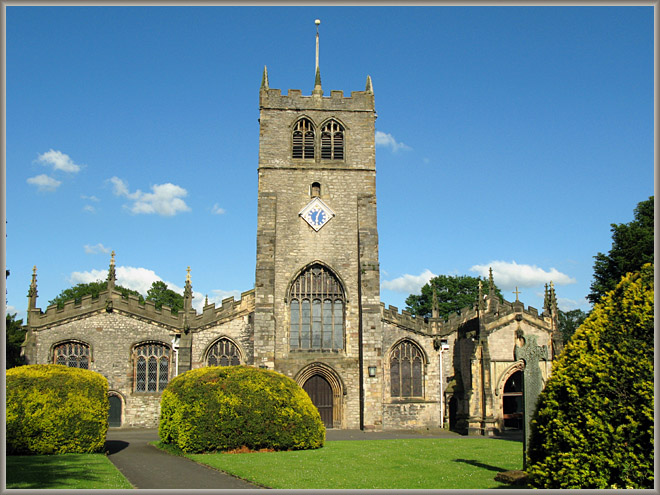

Kendal, Holy Trinity Church
Said to be the second widest parish church in England, and the largest in Cumbria, with two aisles each side of the nave, it was the arena for some vigorous confrontations between the Quakers and the Established Church. The Established clergy gave (almost) as good as they got: William Brownsword, incumbent from 1659, issued a pamphlet, intended largely for his parishioners, entitled The Quaker-Jesuite, or, Popery in Quakerisme ... (1660) which argued that the Jesuits were behnd the rise of Quakerism, and that most of their theology and practices were either Jesuit or ‘monkish’, e.g., ‘They run up and down Naked, though not constantly, yet at some times’, which he affirms to have been a habit of St Ignatius Loyola [page 8].
In 1652, the Quakers accused the authorities of mounting spies on the church ‘steeple’ (tower) to warn them when James Naylor entered the town.
There is a 1690s sketch of the church by the Reverend Thomas Machell, which shows that its outward appearance has not changed much, though the inside has been throughly renovated. According to the parish church website, ‘during the seventeenth century, a painter from Lancashire was employed to disguise the poor state of the building by painting the walls with cherubs, dragons and texts, and the entire woodwork was painted green’. There was also a three-decker pulpit, as at Lancaster.
There are some excellent photos of the interior by Matthew Emmott on the ‘Visit Cumbria’ website at http://www.visitcumbria.com/sl/kendal-parish-church/. For the church website, see http://www.kendalparishchurch.co.uk. When you have finished, close their browser window.
Image © Meg Twycross 24 June 2009
Close window to return